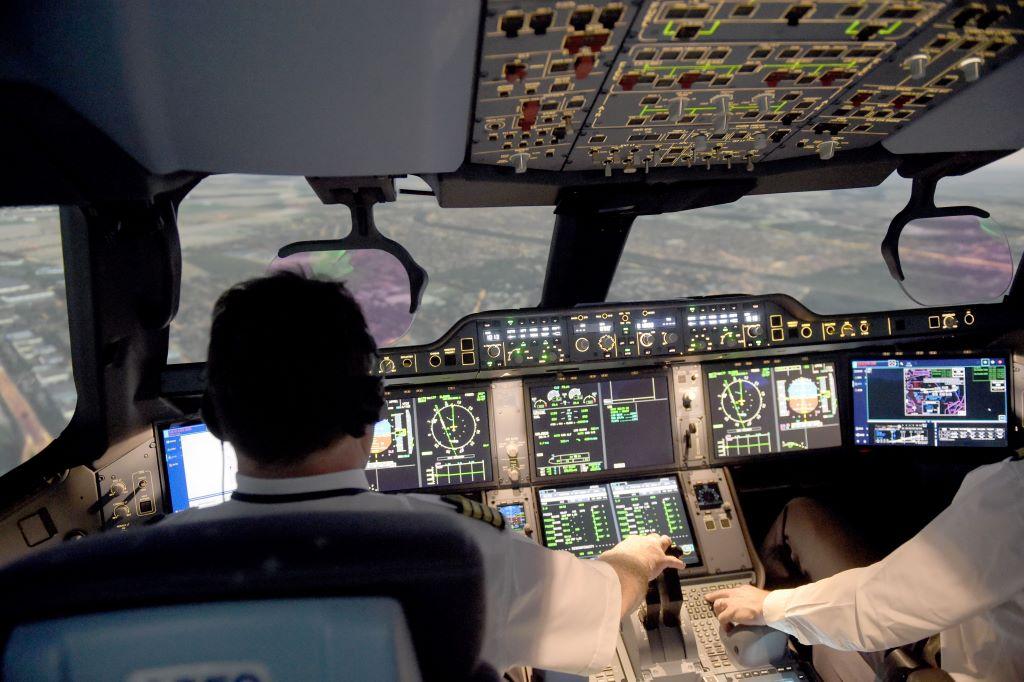Encouraging Aviation’s Next-Generation Workforce

Except for pilot careers, the aviation industry is still a mystery to most kids. Part of the mystery is that high school and middle school students who do take an interest often believe their only decision is whether they should become a pilot.
“For every pilot job, there are 99 other jobs that it takes to get an airplane up in one city and down in another,” says Tammera Holmes, founder and CEO of Chicago-based Aero Star Avion institute. The industry requires a number of other skills, such as in airport operations, airline operations, facilities management, Information technology, airport safety, air traffic control and many others.
Aero-Star Avion Institute supports student awareness of aviation and aeronautical careers with a focus on female, minority, and at-risk youth. Holmes was 16 when she was first introduced to aviation when, at her mother’s insistence, she began attending the Tuskegee Airmen events at Chicago’s Meigs Field.
“My mom made me get up on a Saturday morning … without telling me what I was doing and where I was going,” Holmes recalls. “And it was a complete surprise to me. One Saturday morning changed my life. And that’s why I do what I do. Now I see that light bulb going off every single Saturday in our (Aero-Star) programs and events. We’ve impacted over 11,500 students since 2008 that are 99% minority and girls.”
Her remarks came during the final presentation to the FAA of the Youth Access in Aviation Jobs Taskforce (YIATF) report in Washington, D.C. in late September.
The task force’s mandate was to gather ideas from its 21 volunteer members and create a roadmap to encourage students of all ages to pursue studies and careers in aviation and aerospace.
The task force, representing business, academia, and trade associations, was commissioned two years ago by the DOT/FAA with participants appointed by DOT Secretary Pete Buttigieg.
“We will all need to do more to support underrepresented populations in their pursuit of a career that provides for them and their families in a fast-paced and exciting industry,” the report says.
The presentation outlined 21 ideas and related strategies. The task force presented a set of actionable items for each category of recommendations, such as dividing the U.S. into nine distinct regions to carry out the work.
The report also placed each idea in one of four categories.
“The first is focused on the fact that engagement with young people needs to start early,” it says. “Waiting until high school is simply too late, given that awareness and financial support are two of the significant barriers this task force has identified.”
The second category is the need for, “easy-to-access resources where anyone—caregiver, teacher, guidance counselor or young person—can find out more information and connect to local resources.”
In the third category, the report speaks to the importance of, “collaboration among all the amazing programs across the U. S. to create a connected career pathway that (already exist to) draw students into aviation and aerospace.
The fourth and final category of recommendations—and possibly the biggest hurdle for the students we are trying to reach—is funding, and this entails both providing individual financial support to pursue training and education, as well as creating a sustainable funding model for organizations.”
Many on the task force believe the final financial category is the largest hurdle. To cope, the task force made recommendations, such as reducing the cost of flight training by convincing the FAA to increase the amount of allowable simulator time for pilot certification, increasing the maximum amount allowed for Pell Grants, increasing donations to aerospace educational programs by increasing the tax benefits to corporations and for the FAA to review its regulations and guidance related to technical proficiency of industry personnel and certification standards.
The task force also suggested developing a national aviation scholarship program that could be funded by a 10-cent user fee on all commercial airline tickets sold in the U.S., an increase in airport landing fees and a Congressionally mandated increase in grant funding available to $100 million, providing $50 million to begin a National Scholarship Fund.
The NBAA’s representative to the task force, JoAnne Damato, is the association’s senior vice president of education, training & workforce development. Damato said she will be discussing the task force’s report at the NBAA’s Business Aviation Convention and Exposition in Orlando and other venues over the next few months.
“For too long, the vast majority of aviation and aerospace workers and leaders (have) been overwhelmingly male and white,” the YIARF report says. “The number of women who hold job titles such as ‘pilot’ and ‘aviation maintenance technician,’ among others, are less than 10 percent, and there are even smaller percentages for those from ethnically diverse backgrounds.”
The time is now, it says.




